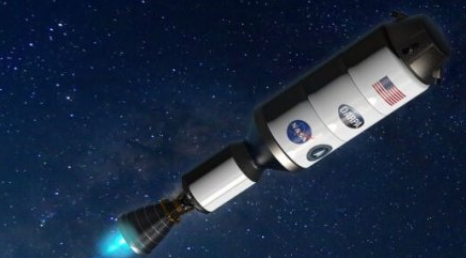On June 26, 1968, the Phoebus 2A, the most powerful space nuclear reactor ever created, was tested at the Nevada Test Site. This significant test, which lasted 750 seconds, demonstrated the potential of nuclear thermal rockets (NTRs) to carry humans to Mars. However, the Phoebus 2A did not progress to actual space missions due to its size, cost, and the shift in U.S. space policy under President Nixon, who favored low-Earth orbit missions over deep space exploration.
The concept of nuclear-powered rockets originated with the military, particularly for intercontinental ballistic missiles (ICBMs). The US Air Force initiated the Rover program in the mid-1950s, aiming to use nuclear reactors to heat hydrogen and expel it to generate thrust, offering significant fuel efficiency over chemical rockets.
How will humans get to Mars? #HALEU-fueled nuclear thermal propulsion could be the answer. Centrus is proud to be pioneering U.S. production of this next generation fuel. Good explainer below:
NASA’s upcoming nuclear spaceships might take us to Mars (https://t.co/NdtbqHonLS)
— Centrus Energy (@centrus_energy) July 22, 2024
Standard reactors use fuel rods containing uranium 235, moderated by materials like water to sustain a fission chain reaction. Translating this technology to space posed challenges, especially the need for reactors to operate at extremely high temperatures, up to 3,000 K. Hydrogen’s corrosive nature at these temperatures and the need for a non-gravitational method to control the reactor further complicated the development.
The Rover program was transferred to NASA and the Atomic Energy Commission (AEC) in 1958, rebranded as the Nuclear Engine for Rocket Vehicle Applications (NERVA). Despite testing 23 reactors over 18 years, issues like hydrogen-induced shedding and fuel cracking persisted, leading to the program’s termination in 1973 when NASA’s focus shifted to low-Earth orbit missions.
Could nuclear power be the key to humanity’s Mars ambitions? 🚀 With military interest reviving nuclear thermal rockets, the conversation could shift about our place in space. #SpaceExploration #NuclearRockets https://t.co/l4hIMO5mhp
— TF🛡️🇺🇸🇫🇷 🐬 🟧 (@Tferriere) July 22, 2024
Interest in nuclear propulsion resurfaced with NASA’s Mars exploration plans, potentially reducing travel time and exposure to space radiation. In 2017, NASA restarted NTR research, and in 2020, DARPA launched the Demonstration Rocket for Agile Cislunar Operations (DRACO) project, aiming to develop a demonstrator for nuclear space propulsion.
DRACO’s design will utilize high-assay-low-enriched uranium (HALEU) to mitigate security risks and regulatory challenges. Lockheed Martin and BWXT Technologies are developing the reactor, leveraging historical NERVA data to address hydrogen-induced fuel cracking and other technical issues.
The DRACO spacecraft will incorporate hydrogen tanks, turbomachinery, a HALEU reactor, and a radiation shield, achieving specific impulse significantly higher than current chemical rockets. The project’s success hinges on addressing the technical and regulatory challenges of launching and operating a nuclear reactor in space.
BWX Technologies is working with NASA, the military and private industry to develop fuel and components for nuclear-powered spaceships.
It hopes its work will eventually help send a crewed mission to Mars.https://t.co/ebfrLMpla4
— Cardinal News (@CardinalNewsVA) July 5, 2024
Future advancements may include bi-modal propulsion systems combining NTR and electric thrusters, potentially enabling faster and more efficient space travel. However, the necessity and feasibility of such technologies remain to be fully proven.
The success of DRACO could pave the way for nuclear-powered space tugs and potentially larger space missions. While the need for nuclear space battleships is debatable, the development of NTR technology represents a significant step in expanding human capabilities in space exploration.
Key Points:
- The Phoebus 2A reactor, tested in 1968, showcased the potential of nuclear thermal rockets (NTRs) but was not used for actual space missions due to its size, cost, and policy shifts.
- NTR technology offers significant fuel efficiency over chemical rockets by using hydrogen heated by a nuclear reactor, a concept originally developed for military ICBMs.
- NASA and the Atomic Energy Commission rebranded the program as NERVA, testing 23 reactors over 18 years but facing persistent technical issues, leading to the program’s termination in 1973.
- Interest in NTRs resurfaced with NASA’s Mars exploration plans and DARPA’s DRACO project, which aims to develop a demonstrator for nuclear space propulsion using HALEU fuel.
- The success of DRACO could lead to advancements in space propulsion technology, potentially enabling faster and more efficient space travel and paving the way for future space missions.
TL Holcomb – Reprinted with permission of Whatfinger News



